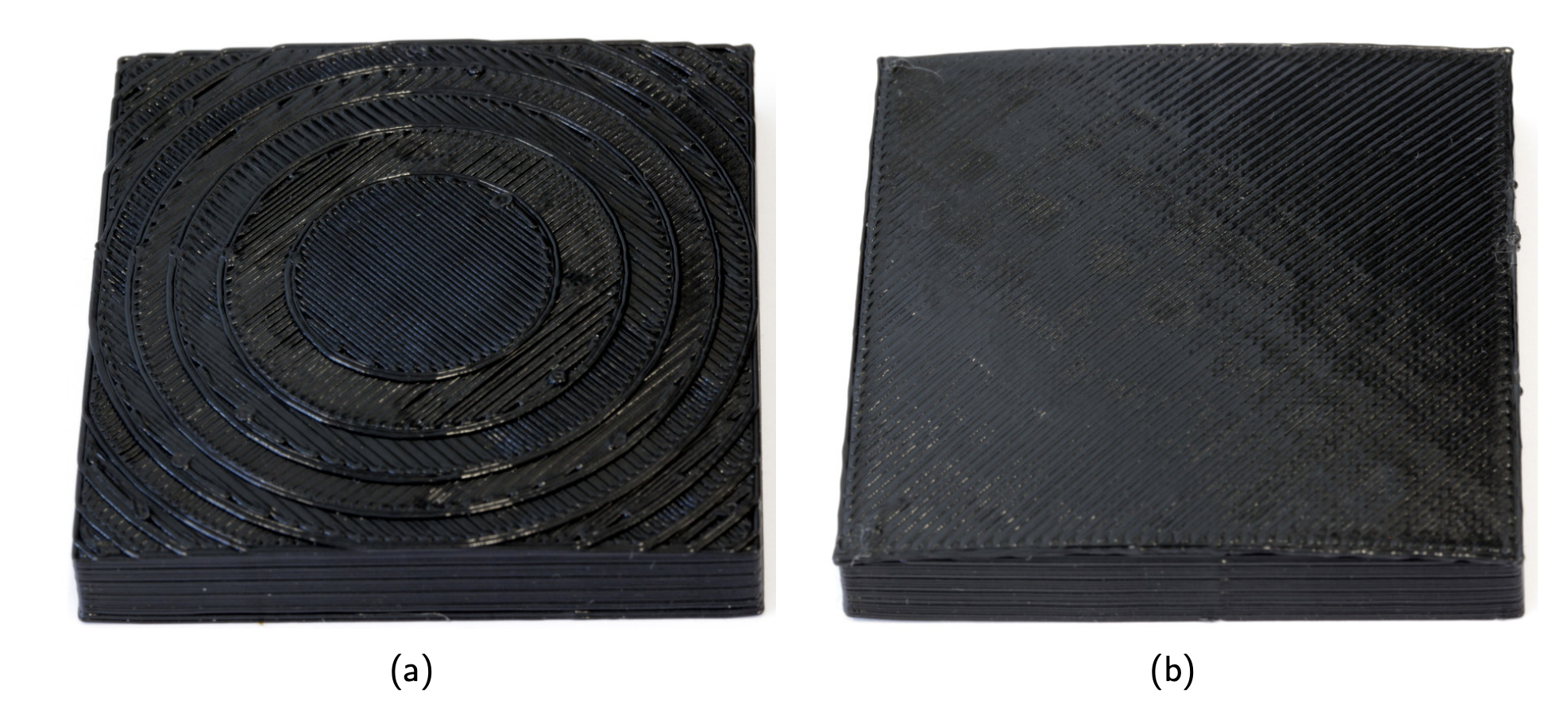Researchers at the University of Hamburg in Germany, have proposed a novel way of slicing 3D printed objects to create smoother results. By 3D printing nonplanar layers close to the horizontal, this slicing method removes the stair-stepping effect typical to FDM surfaces. In addition to the aesthetic benefits, objects 3D printed this way have shown to be demonstrably stronger than their conventional counterparts.
The team have also made the method open source, allowing other FDM users to apply the technique.
The problem of stair-stepping
Due to the discretized layer structure, 3D printed objects often have approximation errors from the original model like stair-stepping. These artifacts occur especially on surfaces with a horizontal slope. For any layer-by-layer 3D printing process, the surface quality of objects can be impaired by this phenomenon
The intensity of the stair-stepping artifacts can be lowered by reducing the layer thickness. This can either be done on all layers evenly, or adaptively on layers where it is necessary.
Since FDM printers have relatively thick layers, this fix does not completely eradicate stair-stepping. and additional, manual post processing is required to smooth the layers. Common techniques involve chemicals or a CNC milling. For example, Zortrax’s Apoller Smart Vapor Smoothing (SVS) device, uses acetone and MEK solvents to post-process FDM models.
Incorporating curved nonplanar layers can get rid of stair-stepping on the surface of objects. Instead of spreading the surface of the object over different layers and creating a stair-stepping effect, nonplanar layers follow the surface. Therefore, the combination of nonplanar and planar layers results in much smoother surfaces for FDM objects.
A novel slicing algorithm for nonplanar 3D printing
The researchers aim to develop a method to 3D print nonplanar layers on top of planar layers in any object. Without further modifications on the 3D printer, the team achieved its goal by modifying open-source slicing software Slic3r. Adding the ability to print nonplanar surfaces to an open-source slicer increases the usability and provides a general-purpose approach. Although Slic3r can be used on all common three-axis 3D printers, the algorithm in the study is particularly developed for the Ultimaker 2.
With the new slicing algorithm, the areas that should be printed with nonplanar are detected automatically. The algorithm also checks for possible collisions while printing. Collision prevention ensures that the printhead does not crash into previously printed structures while printing nonplanar layers.
Area below the nonplanar surfaces is printed with a regular planar structure. The toolpaths are first generated as 2D toolpaths and then projected downwards along the original surface mesh. This forms a nonplanar 3D toolpath that can be visualized in Slic3r. With Slic3r to ensure that the path looks as intended, 3D printing is carried out by moving the planar layers upwards to form a new nonplanar layer.

The surface quality of objects with nonplanar layers is significantly better than with planar layers only. Furthermore, the print time for an object with nonplanar layers is comparable to that for the object with planar layers.
“3D Printing of Nonplanar Layers for Smooth Surface Generation” is the master thesis of Daniel Ahlers, Visiting Scientist at the University of Hamburg. Ahler’s implementation in this work is open-source and can be found on GitHub.
For more additive manufacturing research, subscribe to our 3D Printing Industry Newsletter, follow us on Twitter, and like us on Facebook. Find talent for a project, or advance your career in 3D printing – join 3D Printing Jobs to apply and advertise.
Featured image shows (a) The model of the complex surface to check for proper toolpath generation without collisions and (b) the 3D printed complex surface with modified Slic3r. Image via University of Hamburg.


